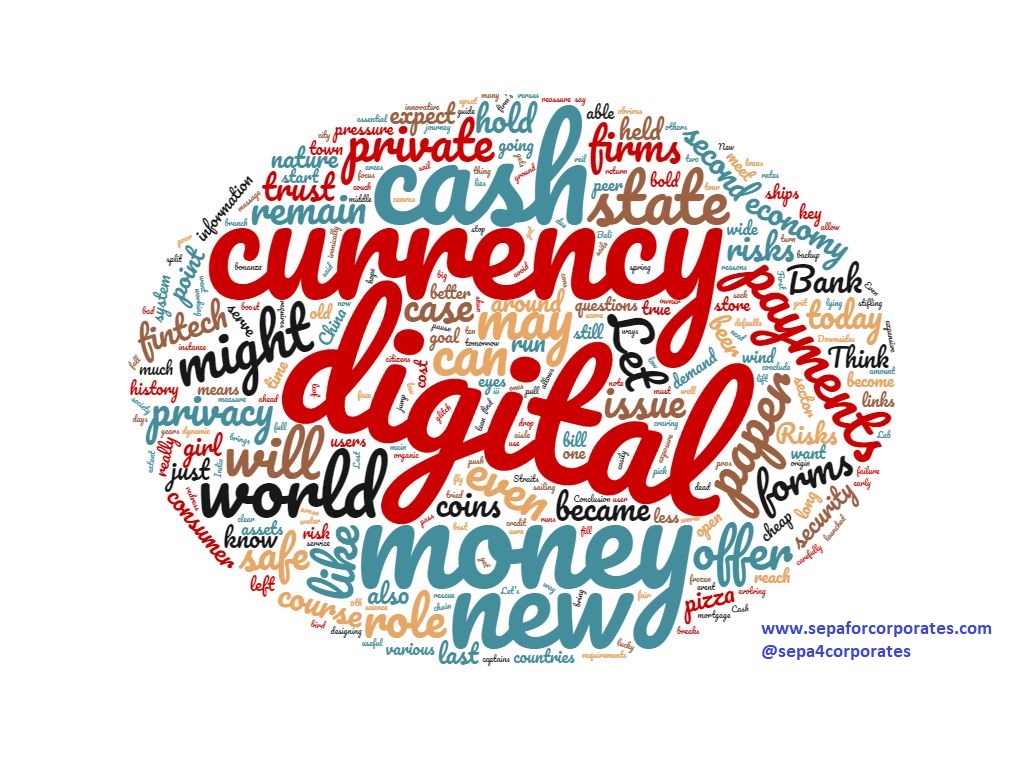The “Winds of Change: The Case for New Digital Currency” speech at the Singapore Fintech Festival last week by Christine Lagarde (IMF Managing Director) was pretty dramatic. The “crypto-world” are salivating the prospect of a digital currency that is backed, even endorsed, by the an organisation such as the International Monetary Fund (IMF) and the potential prospects for digital currencies and central banks in the future. So, following is a quick recap of the speech that makes the case for and against a new central bank backed digital currency.
“Change is the only constant” – Greek Philosopher, Heraclitus of Ephesus
Christine starts with a pretty optimistic and fairly poetic outlook of technological changes that are occurring. Singapore, she suggests, is a place where winds bring change and opportunity.
Change, particularly technology driven changes, can be daunting, destablising and threatening. But change also brings about opportunity, which needs to be harnessed to reap the benefits and manage the risk.
The Changing Nature of Money and the Fintech Revolution
Christine Lagarde gives a quick history of money overview:
- Describing times where physical coins were exchanged and settled between individuals
- Innovation led to bills of exchange which enabled merchants with a bank account at home to withdraw money at a bank at their destination
- But this new form of paper exchange required trust and this is essentially where the state has been the guarantor of trust
Going, going Digital
The new winds of digitalisation have created a new world order. Enabling travel anywhere and at anytime, smartphones and other devices have created virtual worlds where many of use interact everyday and for long periods. Through these devices we exchange information in real time on various platforms, and companies are realising the value of this data (the new gold).
In this changing world, Christine suggests the nature of money also needs to change:
- To become more convenient, user-friendly, cheaper, safer and protected
- Available across multiple platforms: social, online and “real-world”
- Some countries are moving towards cashless with offerings such as WeChat in China, to PayTM in India, to M-Pesa in Kenya
Payment providers “…are responding to what people demand, and what the economy requires” – Christine Lagarde
Pros of Central Bank Digital Currencies
This is where it gets interesting, Christine specifies:
- Proper regulation of cryptocurrency entities is essential, “a pillar of trust”
- “A digital currency would be the liability of the state, like cash today, not of a private firm”
- Some central banks (Canada, China, Sweden, Uruguay) are already considering a digital currency
- Central banks should consider the issuing digital currency to address public policy goals
- Financial Inclusion
- Enabling digital currency to reach people in remote, rural, poverty stricken and marginalised regions – often areas ignored by banks
- Security and consumer protection
- Without cash, a few private payment providers could gain incredible power and control – these private firms may:
- Under-invest in security and not realise or understand the societal impacts of a payment failure
- With just a few private payment providers, resilience may be eroded – if one provider fails, the entire system and or network may be vulnerable
- A central bank digital currency could be a back-up form of payment, and promote competition by offering a low cost alternative
- Without cash, a few private payment providers could gain incredible power and control – these private firms may:
- Privacy in payments (something the private sector is unable to do)
- Cash is an anonymous form of payment – which in turn protects your privacy
- With the data available to private payment providers, they may not respect your privacy and in turn present certain or restrict your purchasing options
- A central bank digital currency wouldn’t offer a fully anonymous digital currency, but the mindset would be different
- Financial Inclusion
Cons of Central Bank Digital Currencies
Christine highlights the following disadvantages, but also recognises technology offers new and innovative ways to tackle these downsides:
- Risks to Financial Integrity
- The balance to strike here is between privacy and financial integrity
- Central Banks should consider a digital currency that requires users identity to be authenticated and the transactions recorded
- Users identities should not be revealed to third parties or governments unless required by law
- Risks to Financial Stability
- Digital currencies could put more pressure on bank deposits
- Might digital currencies spell the end of the bank account?
- Banks may compete with better interest rates and additional services, but what could that mean for private banking institutions?
- Could this result in the mass public withdrawing funds from their bank accounts?
- This needs further review according to Christine
- Risks to Innovation
- Christine asks if the central bank offers a complete digital currency solution, what would your role be? And in this context, a central bank digital currency would hamper innovation
- To prevent this from happening, Christine recommends public-private partnerships where the central bank works with banks and other financial firms
Technology will change, and so must we – Christine Lagarde
To conclude, Christine talks about the need for change in a very strong way:
- “..while the case for digital currency is not universal, we should investigate it further, seriously, carefully, and creatively.”
- “More fundamentally, the case is about change—being open to change, embracing change, shaping change.”
- “Technology will change, and so must we. Lest we remain the last leaf on a dead branch, the others having decided to fly with the wind.”
